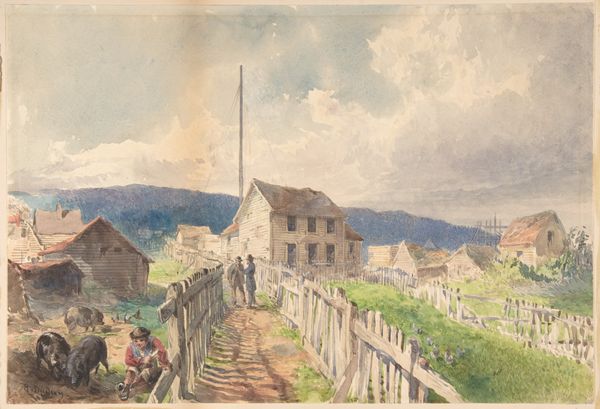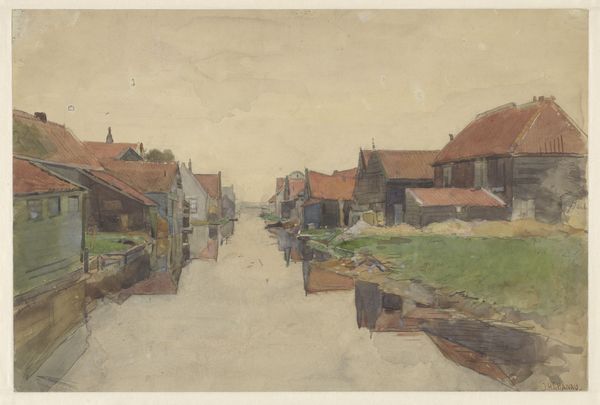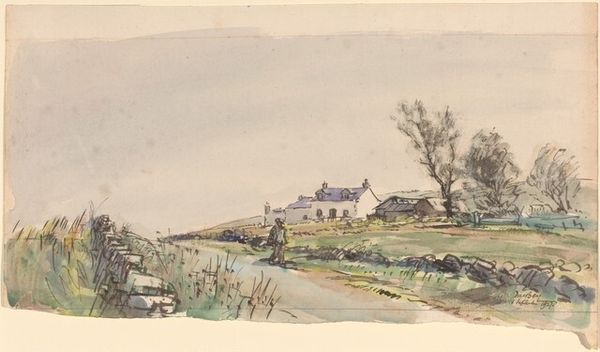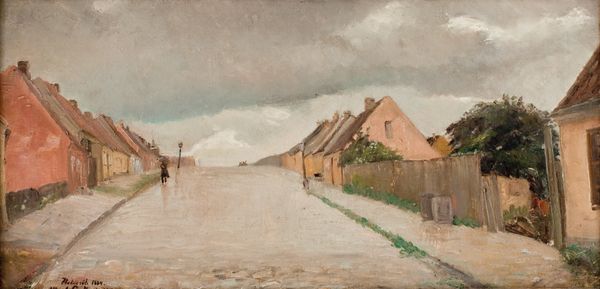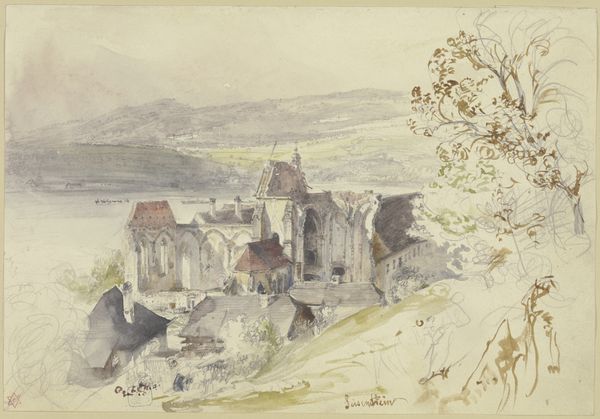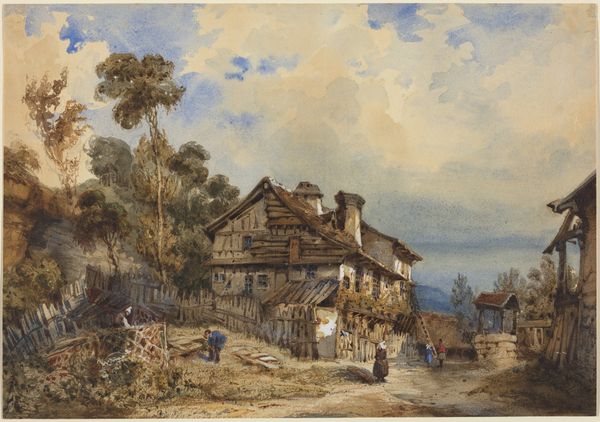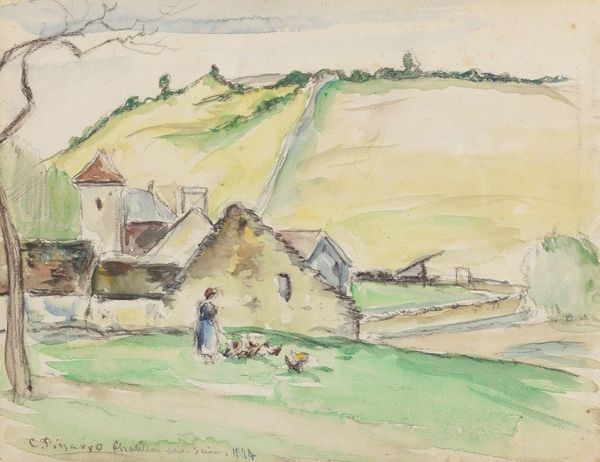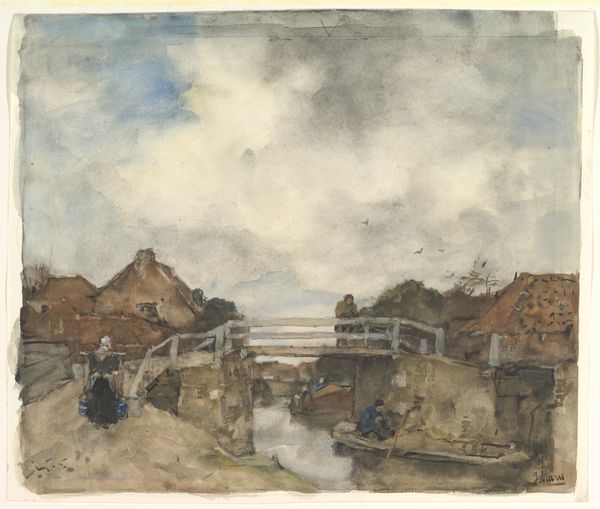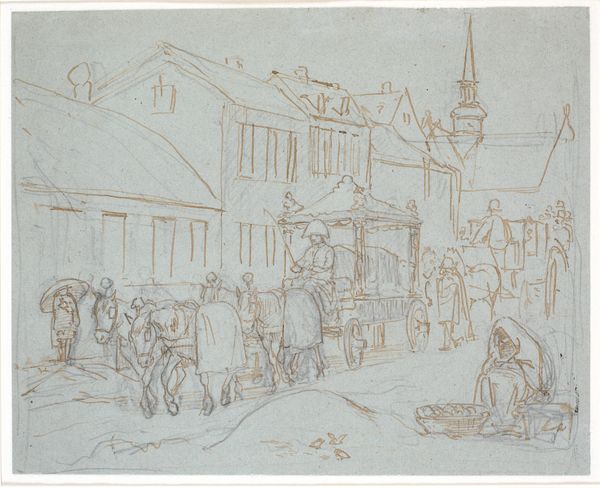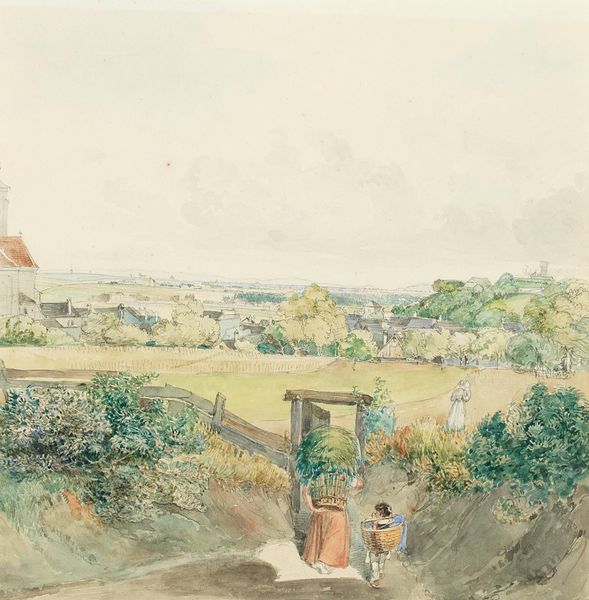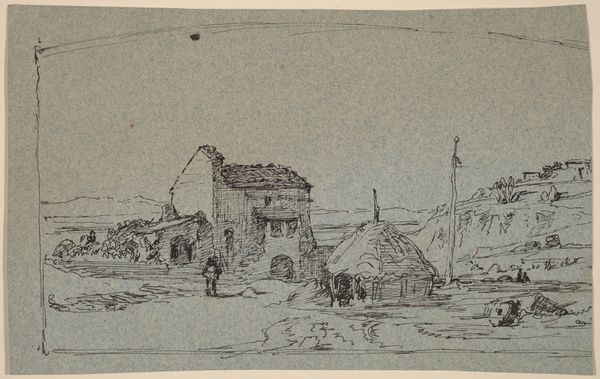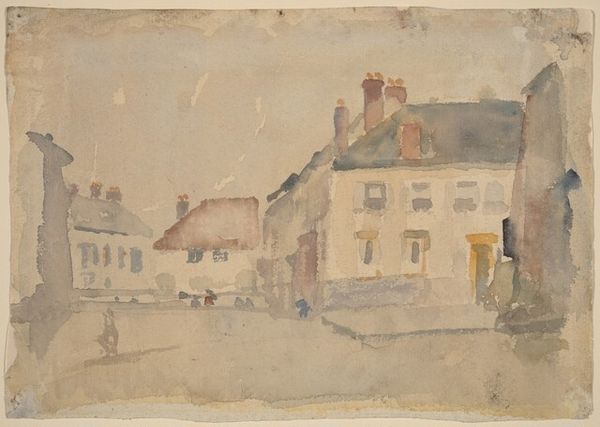
plein-air, watercolor
#
dutch-golden-age
#
impressionism
#
plein-air
#
landscape
#
watercolor
#
cityscape
#
watercolour illustration
#
genre-painting
#
watercolor
Dimensions: height 240 mm, width 380 mm
Copyright: Rijks Museum: Open Domain
Curator: This delicate watercolor before us, "Dorpstafereel te Laroche," or "Village Scene at Laroche," was created by Carel Nicolaas Storm van 's-Gravesande in 1888 and currently resides in the Rijksmuseum. Editor: The first impression is one of muted activity, almost veiled. It feels more like a memory than a depiction, rendered so skillfully with the translucency of watercolor, a quiet record of a bustling town. Curator: Indeed. Let's consider the composition. Van 's-Gravesande masterfully uses a horizontal format to convey the breadth of this village activity. Notice how the eye is guided from the foreground with its suggestions of rugged terrain towards the structures and human activity concentrated towards the back. There’s a fascinating contrast in the light. Editor: Absolutely, the liminal state evoked is quite palpable. It really pushes this watercolor beyond just a genre scene, making us ponder about labor, social interactions, and market economies. Note the placement of "CASINO" atop one of the structures. I am particularly intrigued by how Van 's-Gravesande has employed watercolor techniques. See how the transparent washes are overlaid, manipulating tonal gradations to create depth and atmosphere, all within the constraints of a single, relatively small sheet. Curator: Precisely. And that materiality directs us to Van 's-Gravesande's own physical process— working en plein air no doubt. The swift application of paint hints at immediacy capturing transient effects. Consider how this echoes Impressionistic principles that came to prominence towards the latter part of the nineteenth century. Editor: True. The medium isn't just a neutral vehicle; it becomes a record of a specific set of practices, performed under specific conditions. We get to ask ourselves; what labor enabled this image to come to life? The availability of pigments, the paper... How do all of those enable van 's-Gravesande’s composition? Curator: These kinds of visual investigations, combined with an understanding of the materials, reveal the structural brilliance embedded in what seems a simple genre scene. It elevates this artwork to something truly fascinating. Editor: Absolutely. It's a confluence of elements that prompts a deeper look, and challenges our conventional understandings of high art and everyday life. It becomes more than a snapshot—more than "just" impression. It stands as a fascinating artifact with layered stories of people and processes inscribed.
Comments
No comments
Be the first to comment and join the conversation on the ultimate creative platform.

